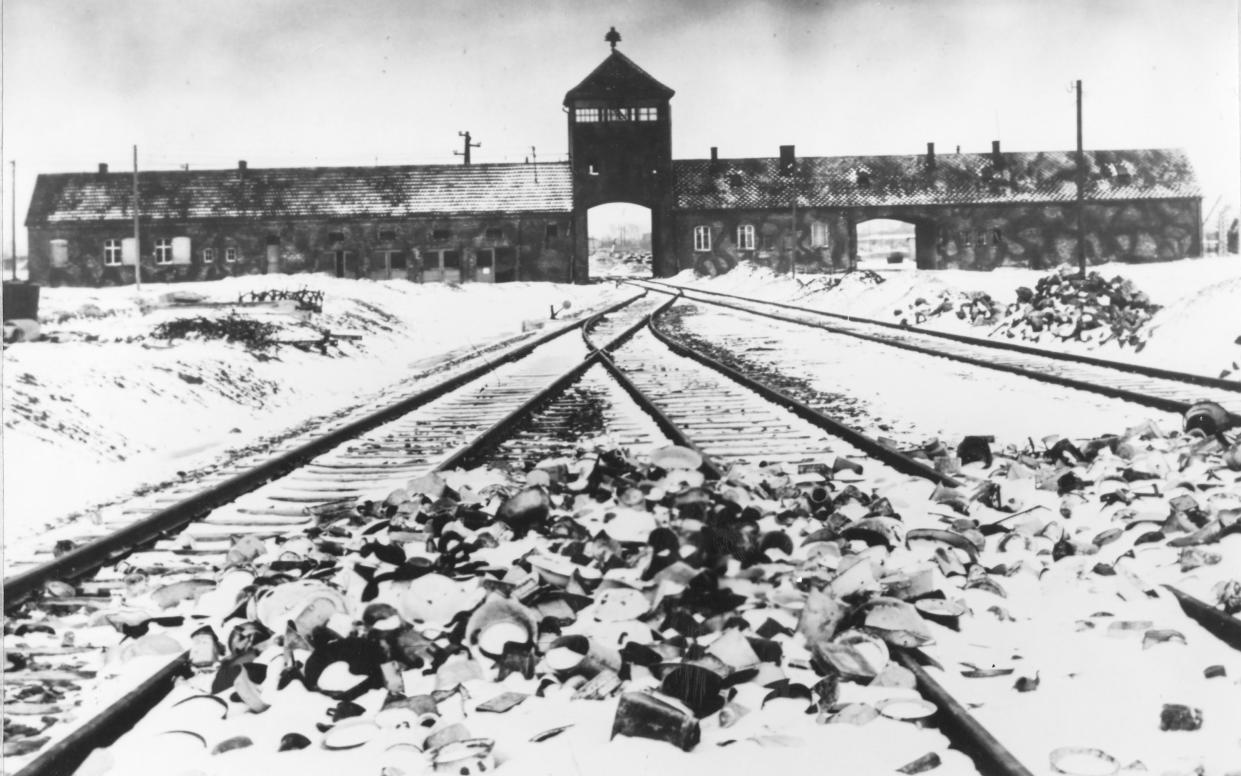Anti-Semitism didn’t start with the Holocaust - sadly, it didn’t end there either

In the late 1900s and early 2000s, people became more aware of the Holocaust. Films like Schindler’s List showcased the horrors of the Holocaust to the masses. Survivors felt more able to share their testimonies. In 1991, the Holocaust was added to the National Curriculum.
But this greater awareness of the Holocaust has led to the misuse of its symbols and language. From yellow stars on anti-lockdown protests to placards comparing the State of Israel to the Nazis, the symbols and language of the Holocaust are wilfully being misused and politicised.
So, let’s start 2024 by going back to basics. What was the Holocaust?
The Holocaust was the murder of approximately 6 million Jewish men, women and children by the Nazis and their collaborators. It was an event unparallelled in history – the first and so far only time a state has attempted to annihilate every single person in a group, everywhere they exist on the planet.
Long before gas chambers, the Nazis marked Jews out for persecution – literally, putting a Star of David on their clothes. They were taunted, and then thrown out of schools and excluded from their professions. They were prevented from marrying non-Jews by law. They were depicted in games, in films, in books as the mortal enemy of the German people.
As persecution intensified there were boycotts against Jewish businesses. Jewish property was destroyed. Jewish homes were taken over by the State. Synagogues were burnt down.
Eventually, Jews were forced into ghettos across Europe. They lived in increasingly appalling conditions with limited food, water and sanitation. They were rounded up by killing squads and shot in fields, ravines, cemeteries, and villages. They were forced to dig their own graves. They were stripped of their gold teeth. They were shaved. They were beaten. They were rounded up by killing squads and shot in fields, ravines, cemeteries, and villages. They were forced to dig their own graves. They were taken on trains from every corner of Europe into purpose-built killing centres where they were gassed, and their remains burnt in industrial crematoria.
As the camps were liberated the truth of what had been happening across Europe became public knowledge. The world – which had stood in silence as the Jews were persecuted and murdered – said Never Again.
But it was not to be that simple. Because very quickly came the questions. Was it really so bad? Was it really 6 million? Were the Jews telling the truth? And those “questions” have never stopped.
In some ways that comes as no surprise. The Holocaust happened – and could only happen – on the back of two millennia of anti-Jewish hatred, sewn into the fabric of Christian societies.
The Holocaust could only happen because the massacre of the Jews of York happened in 1190. The Holocaust could only happen because the expulsion of Jews from Spain was decreed in 1492. The Holocaust could only happen because it was ruled that the Jews of Venice were to be confined to a Ghetto in 1516. The Holocaust could only happen because at least tens of thousands of Jews were massacred in the Eastern European pogroms of the late 18th and early 19th century.
And just as antisemitism existed before the Holocaust, those two thousand years of hatred were not erased by the Holocaust.
The annihilationist anti-Semitic ideology that allowed men and women across Europe to take up arms and massacre their Jewish neighbours, did not start in the gas chambers of Auschwitz. And it did not end there either.
We know that because we see it with our own eyes, today - in the October 7th massacre perpetrated by Hamas, a terrorist organisation with a genocidal policy towards Jews. In the celebration of that massacre within hours of it happening, and the defence of it ever since. In the questioning of every single element of that massacre and distrust of the witnesses, even when much of the evidence was recorded, gleefully, by the perpetrators themselves. In the antisemitism that stalks British streets and online spaces today.
On Holocaust Memorial Day we talk a lot about human stories. Because every single victim of the Holocaust was a human being. We come together to remember and learn because still today, there are many who wilfully deny and distort the Holocaust. We must never forget where antisemitism can lead and there can be no room for complacency.
To truly comprehend the Holocaust, it is not enough to recognise its universal lessons of countering hatred in all forms and ensuring tolerance for all. We have to understand that the Holocaust specifically targeted Jews and was enabled by millennia of specifically anti-Jewish hatred. This needs to be taught clearly and understood in our schools and colleges.
Let us not fudge the truth of the particularity of antisemitism to the Holocaust. Instead, we need to talk truthfully and accurately about the particular hatred that led to the murder of 6 million Jewish people. That hatred did not die in Auschwitz – it survives to this day.
Jews were not barricaded into gas chambers because they were human. Rather, humans were massacred in their millions simply because they were Jews.
Karen Pollock is Chief Executive of the Holocaust Educational Trust

